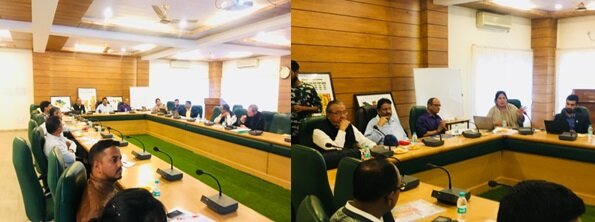Climate change is one of the biggest environmental and developmental challenges that the natural ecosystems and socio-economic systems face. According to the Intergovernmental Panel on Climate Change (IPCC 2014), climate change is already occurring and impacting natural ecosystems and human societies. Further, climate change in the coming decades is likely to intensify, thereby adversely impacting food production, water resources, biodiversity and health. The impact or risk of climate change is the result of interaction of climatic hazards, exposure and vulnerability of the communities and systems. Among the three factors, vulnerability, which is determined by the sensitivity and adaptive capacity of the systems, can be addressed to overcome the adverse impacts of climate change. Thus, there is a need to assess the vulnerability of natural ecosystems and socio-economic systems and undertake measures to reduce the vulnerability. According to IPCC 2014, the “first step towards adaptation to future climate change is reducing vulnerability and exposure to present climate variability.” According to multiple global climate risk assessments, India is one of the most vulnerable countries in the world. Assessment of vulnerability of a system is one of the critical steps in adaptation planning. Vulnerability could be assessed for the current climate risks and long-term climate change. The focus of this Manual is to provide practical guidance on assessment and estimation of current climate vulnerability of regions, sectors and communities. Rationale for Vulnerability
Latest News
Latest Events
Level-2 workshop on "Climate Modeling and Data Analysis"
5th–8th March 2019


Climate modeling and Capacity Building training at SCCC-Uttarakhand
30th Jan-2nd Feb 2018

Pilot Program on Partnership for Resilience & Preparedness (PREP) in Uttarakhand
4th and 5th January 2018
